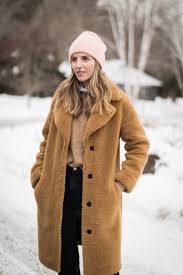❄️ Introduction: Dressing for the Cold Without Compromise
Winter is a season of contrasts—sparkling snow, cozy fires, and festive cheer, but also biting winds, freezing temperatures, and unpredictable weather. Whether you’re navigating city streets, hiking through snowy trails, or simply commuting to work, knowing what clothes to wear in winter is essential for comfort, safety, and style.
This guide explores the best clothes to wear in snow and how to layer effectively for different winter conditions. From thermal basics to statement outerwear, we’ll help you build a winter wardrobe that’s both functional and fashionable.
🧊 The Science of Layering: Your Winter Armor
Layering is the cornerstone of winter dressing. It’s not just about piling on clothes—it’s about strategic insulation and moisture management. The three-layer system is your best friend:
1. Base Layer: Moisture Management
This layer sits closest to your skin and regulates body temperature by wicking away sweat.
- Materials: Merino wool, polyester, bamboo blends
- Examples: Thermal tops, leggings, long-sleeve undershirts
- Why it matters: Sweat can make you cold. A good base layer keeps you dry and warm.
2. Middle Layer: Insulation
This layer traps heat and keeps your core warm.
- Materials: Fleece, down, wool
- Examples: Sweaters, hoodies, insulated vests
- Why it matters: It creates a buffer of warmth without adding bulk.
3. Outer Layer: Weather Protection
This layer shields you from wind, rain, and snow.
- Materials: Waterproof shells, Gore-Tex, nylon blends
- Examples: Parkas, puffer jackets, ski jackets
- Why it matters: It keeps the elements out while allowing moisture to escape.
🏔️ Best Clothes to Wear in Snow: Function Meets Fashion
Snowy conditions demand more than just warmth—they require waterproofing, traction, and durability. Here’s what to prioritize:
🥾 Footwear
- Snow Boots: Insulated, waterproof, and with deep treads for grip
- Features to look for: Faux fur lining, rubber soles, lace-up or zip closures
- Brands to consider: Sorel, Columbia, Timberland
🧤 Accessories
- Gloves: Waterproof outer shell with fleece or wool lining
- Scarves: Thick knit or fleece to protect your neck and face
- Hats: Beanies or trapper hats that cover your ears
🧥 Outerwear
- Parkas: Long, insulated, and often with faux fur hoods
- Puffer Jackets: Lightweight yet warm, ideal for urban settings
- Ski Jackets: Designed for movement and snow resistance
👖 Bottoms
- Snow Pants: Waterproof and insulated, ideal for outdoor activities
- Thermal Leggings: Can be worn under jeans or trousers
- Fleece-lined Jeans: Stylish and warm for casual wear
🧳 What Clothes to Wear in Winter: Everyday Essentials
Not every winter day involves snow. For dry but cold conditions, your wardrobe should still prioritize warmth and comfort.
👚 Tops
- Turtlenecks: Stylish and warm, perfect for layering
- Sweaters: Wool, cashmere, or cotton blends
- Cardigans: Great for indoor layering
👖 Bottoms
- Corduroy Pants: Thick and textured, ideal for cold days
- Wool Trousers: Professional and warm
- Layered Leggings: Under skirts or dresses for added warmth
👟 Footwear
- Chelsea Boots: Leather or suede with rubber soles
- Combat Boots: Durable and stylish
- High-top Sneakers: With thermal insoles for casual wear
🧥 Winter Outerwear: The Statement Piece
Your coat is the centerpiece of your winter outfit. It’s the first thing people see and the last line of defense against the cold.
🧥 Types of Winter Coats
- Wool Coats: Elegant and warm, ideal for formal settings
- Down Jackets: Lightweight and highly insulating
- Trench Coats with Liners: Stylish and versatile
- Peacoats: Classic and structured
🧵 Features to Look For
- Insulation Rating: Check for fill power in down jackets (600+ is great)
- Waterproofing: Look for sealed seams and water-resistant fabrics
- Length: Longer coats offer more coverage and warmth
🌨️ Dressing for Winter Activities
Whether you’re skiing, snowboarding, or just building a snowman, your outfit needs to match your activity level.
⛷️ Skiing & Snowboarding
- Base Layer: Moisture-wicking thermals
- Middle Layer: Fleece or insulated vest
- Outer Layer: Waterproof ski jacket and pants
- Accessories: Goggles, helmet, neck gaiter
🚶 Winter Hiking
- Footwear: Waterproof hiking boots with thermal socks
- Layers: Breathable base, insulating fleece, windproof shell
- Extras: Backpack with emergency gear, hand warmers
🛷 Casual Snow Play
- Outerwear: Parka or puffer jacket
- Bottoms: Snow pants or waterproof trousers
- Footwear: Insulated boots with good grip
🧣 Winter Accessories: Small Items, Big Impact
Accessories can make or break your winter comfort. They’re not just stylish—they’re essential.
🧤 Gloves
- Touchscreen-Compatible: So you don’t have to remove them
- Mittens vs. Gloves: Mittens are warmer; gloves offer dexterity
🧣 Scarves
- Infinity Scarves: Easy to wrap and stay in place
- Blanket Scarves: Oversized and cozy
🧢 Hats
- Beanies: Simple and warm
- Trapper Hats: For extreme cold
- Balaclavas: Full-face coverage for snow sports
🧼 Winter Clothing Care Tips
Winter gear is an investment. Keep it in top shape with these care tips:
- Dry Clean Wool Coats: Prevent shrinkage and maintain texture
- Wash Thermals Separately: Use gentle detergent and cold water
- Air-Dry Outerwear: Avoid heat damage from dryers
- Store with Cedar Blocks: Keep moths away from wool
🛍️ Shopping Tips: Building Your Winter Wardrobe
When shopping for winter clothes, consider these factors:
- Fit: Leave room for layering
- Material: Prioritize natural fibers like wool and down
- Versatility: Choose pieces that work for multiple occasions
- Budget: Invest in key items like coats and boots; save on accessories
👗 Winter Fashion Trends
Winter doesn’t mean sacrificing style. Here are some current trends:
- Monochrome Looks: All-white or all-black outfits
- Chunky Knits: Oversized sweaters and scarves
- Faux Fur Accents: On collars, cuffs, and hoods
- Layered Textures: Mixing leather, wool, and fleece
🧭 Regional Considerations: Dressing for Different Winters
Winter varies by location. Here’s how to adapt:
🏙️ Urban Winters
- Style: Sleek coats, leather boots, tailored layers
- Function: Windproof and water-resistant fabrics
🏞️ Rural or Mountain Winters
- Style: Rugged boots, heavy-duty parkas, thermal layers
- Function: Maximum insulation and waterproofing
🌧️ Mild Winters
- Style: Light jackets, layered knits
- Function: Breathable fabrics and rain protection
🧠 Final Thoughts: Winter Dressing Made Easy
Winter dressing is all about preparation. By understanding what clothes to wear in winter and choosing the best clothes to wear in snow, you can stay warm, dry, and stylish no matter what the season throws at you.
From layering basics to statement outerwear, your winter wardrobe should reflect both your lifestyle and your personal style. With the right gear, winter becomes less of a challenge and more of an opportunity—to explore, to express, and to enjoy.



